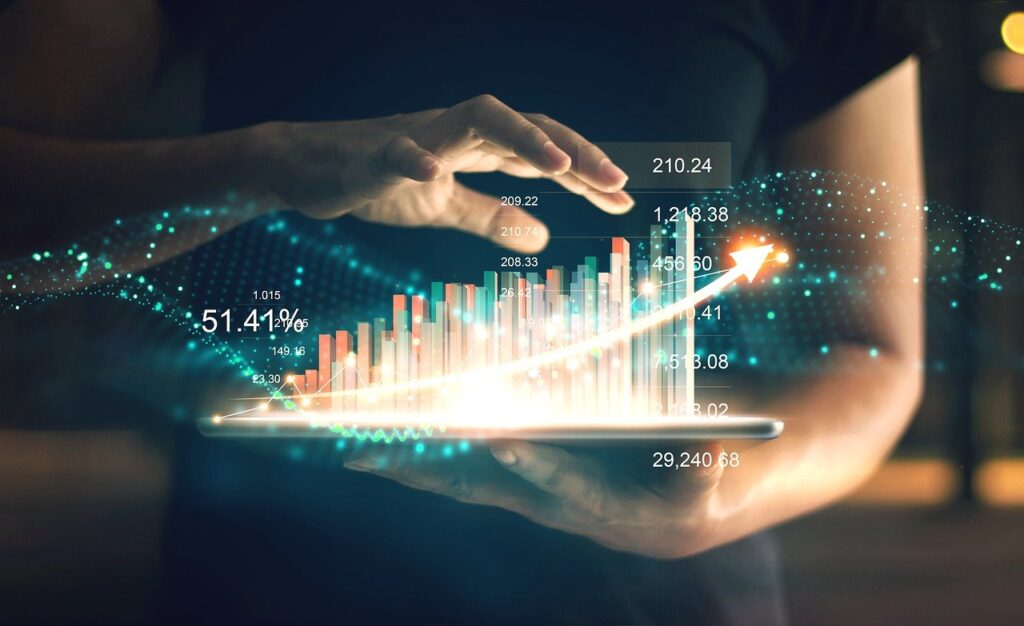In this digital world, data is produced in large volume by end users, organizations and electronic machines. Organizations use this data to get insights into the market and demands of their customers and make effective decisions that would bring profit to the organization. Data acquisition is the process used to do so. This article gives a Comprehensive Guide to the Types, Components, and Applications of data acquisition.
Table of Contents
1. What Is Data Acquisition?
Data acquisition is a process of collecting and storing data from across the world into the system to analyze further. The data is acquired from different devices and sources using sensors and signals. In the data acquisition method, the analog signals are converted into digital signals and stored in the flash drivers or ROM or any other hard disk.
The data acquisition is done using the data acquisition system that will store the data and analyze the data using data analysis and reporting software with the help of a network connection. This data acquisition system is also used remotely and monitored from anywhere and anytime.

2. Importance Of Data Acquisition
The data acquisition software is used to test the electromechanical devices that are developed by the organizations. Before data acquisition solutions came into existence, the devices were tested using unstructured data that was based on the opinions of the users. However, with data acquisition methods, the products are tested based on objective measures by taking data from sensors and analyzing them. The main objective of the data acquisition method is to ensure high performance, safety, and reliability of the product.
- Data acquisition improves decision-making by capturing data promptly. This helps organizations to understand patterns, detect inefficiencies and predict future trends.
- Data acquisition plays a key role in industries where real-time decisions impact safety, efficiency and profitability more.
- Data acquisition is essential in the automation industry to capture data from sensors and input devices,
- It enhances research and development by capturing reliable data and helps researchers gain insights into complex systems.
- It helps to reduce the downtime and failures of the machines by continuously monitoring the health and predicting the failures of the equipment.
3. Types of data acquisition systems
There are two types of data acquisition systems present. They are
Analogue data acquisition system: it is a data acquisition system that is operated with the help of analogue signals that can be obtained from DC or AC voltages, currents, resistances, transducers like LVDT, thermocouples and others. the blocks used in analogue data acquisition systems are
- Transducer which helps to convert the physical quantities to electrical signals,
- Signal conditioner that helps to amplify the signals and select a small portion of the signals,
- Display devices will help the user to monitor the input signals,
- Graphic recording instruments are used to record all the input data given to the data acquisition system,
- A magnetic tape instrument is used to store and reproduce the input data.
Digital data acquisition system: is a data acquisition system that is operated with the help of digital signals. In this digital data acquisition system digital components are used to store and monitor the input and output data. In the digital data acquisition system three main operations are done. They are
- Taking the analogue signals
- Converting the analogue signal to digital signals,
- Processing the digital signals.
The blocks used in analogue data acquisition systems are
- Transducer which helps to convert the physical quantities to electrical signals,
- Signal conditioner that helps to amplify the signals and select a small portion of the signals
- Multiplexer in which multiple input signals are connected to output signals either parallel or in series to act like a converter,
- Analog to digital converter is used to convert the analogue input signals to digital signals and produce them as output,
- The display device is used to display the output data in digital format,
- A Digital recorder is used to record the digital data output.

4. Components of Data Acquisition System
- Analog to digital converter: this converter will take all the data from the surroundings and change them to discrete dimensions, which are then translated by the processor. The discrete dimensions can be of bit length of 12 bits, 16 or 18 bits or more. The maximum length of discrete dimension will achieve the higher goals of analogue to digital converter.
- Sensor or transducer: sensors are used to convert the temperature, power, voltage, and current signals and make it eligible for this analog-to-digital converter. A good transducer must be used that has factors like precision and flag moulding to get high-quality output.
- Signal conditioning: signals that are collected from the surroundings will have more noise, and it gives wrong results if the signals are given as input as is. Signal conditioning circuitry is used that will manipulate the signals to reduce the noise and make them ready to be inputted to analog to digital converters. This signal-conditioning circuitry contains amplifications, attenuations, filters and isolators.
5. Application Of Data Acquisition Systems
Data acquisition systems are used across a wide variety of industries and fields:
- Manufacturing: In manufacturing, data acquisition systems are used to monitor and control production processes. For example, temperature and pressure sensors can help maintain the ideal conditions for producing high-quality products. DAQ systems are also essential in process control, where real-time data is used to adjust machinery settings automatically.
- Automotive: In the automotive industry, data acquisition systems play a vital role in vehicle testing and development. They are used to collect data on engine performance, fuel efficiency, emissions, and vehicle dynamics. This data helps engineers develop more efficient and safer vehicles.
- Healthcare: In healthcare, data acquisition systems are used in medical devices to monitor patient vital signs such as heart rate, oxygen levels, and blood pressure. DAQ systems also play a role in diagnostic equipment like MRI and CT scanners, where real-time data is essential for accurate diagnostics.
- Environmental Science: Data acquisition systems are crucial for environmental monitoring, where they are used to collect data on weather conditions, air and water quality, and soil properties. This data helps in climate research, disaster prediction, and ensuring compliance with environmental regulations.
- Energy: In the energy sector, data acquisition systems monitor the performance of power plants, wind turbines, and solar panels. By collecting data on energy production and equipment performance, companies can optimize energy output and reduce operational costs.
6. Conclusion
There are different types of data acquisition systems used by organizations, such as wireless data acquisition systems, serial communication, USB, plug-in boards, data acquisition systems and others to store and process their data to make effective decisions. Some of the most used data acquisition systems are WINDAQ, ActiveX, DATAQ instruments, fluke calibrations, VTI instruments, DAQami, tracerDAQ, DASYlab and other data acquisition systems used by organizations.